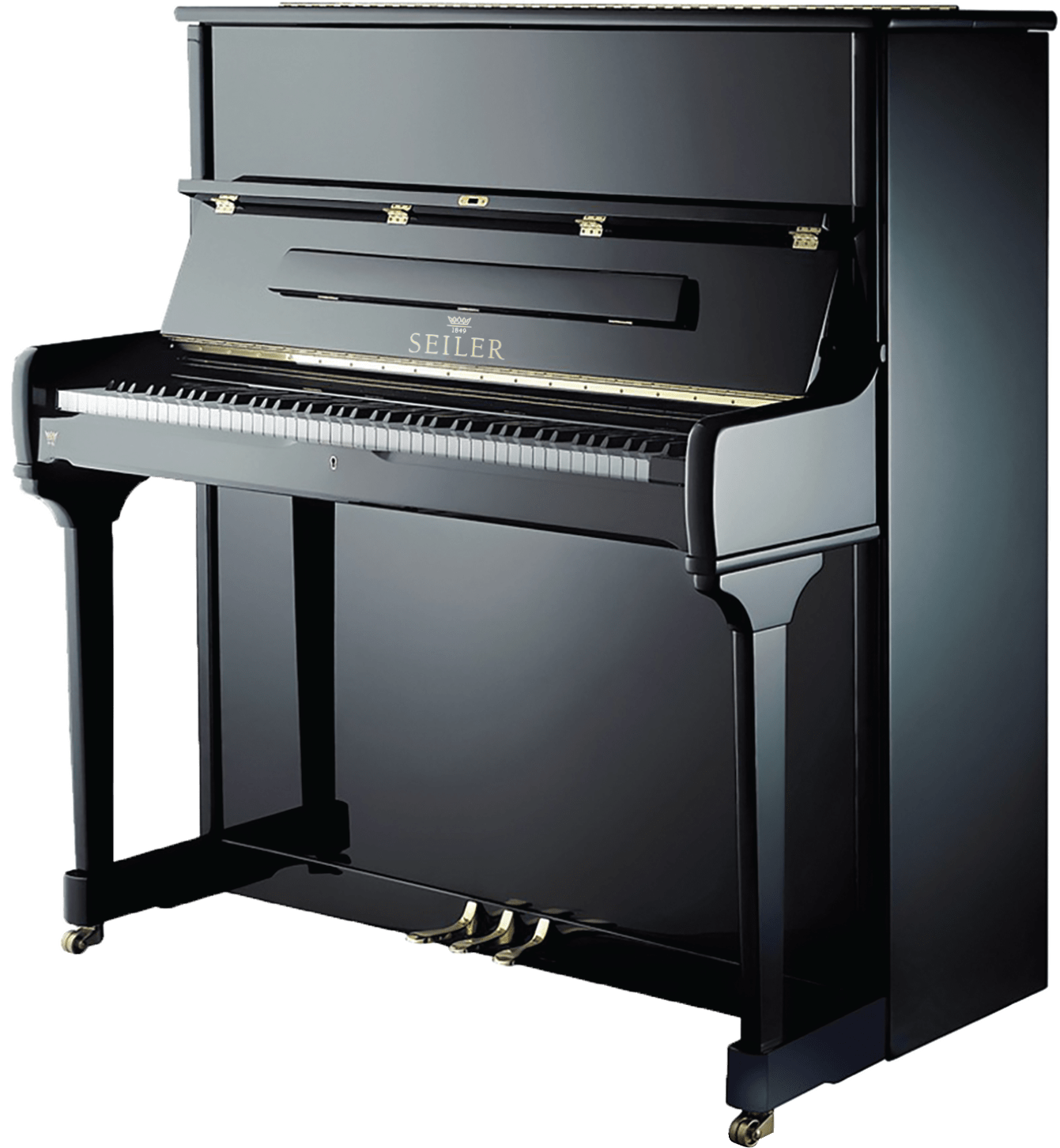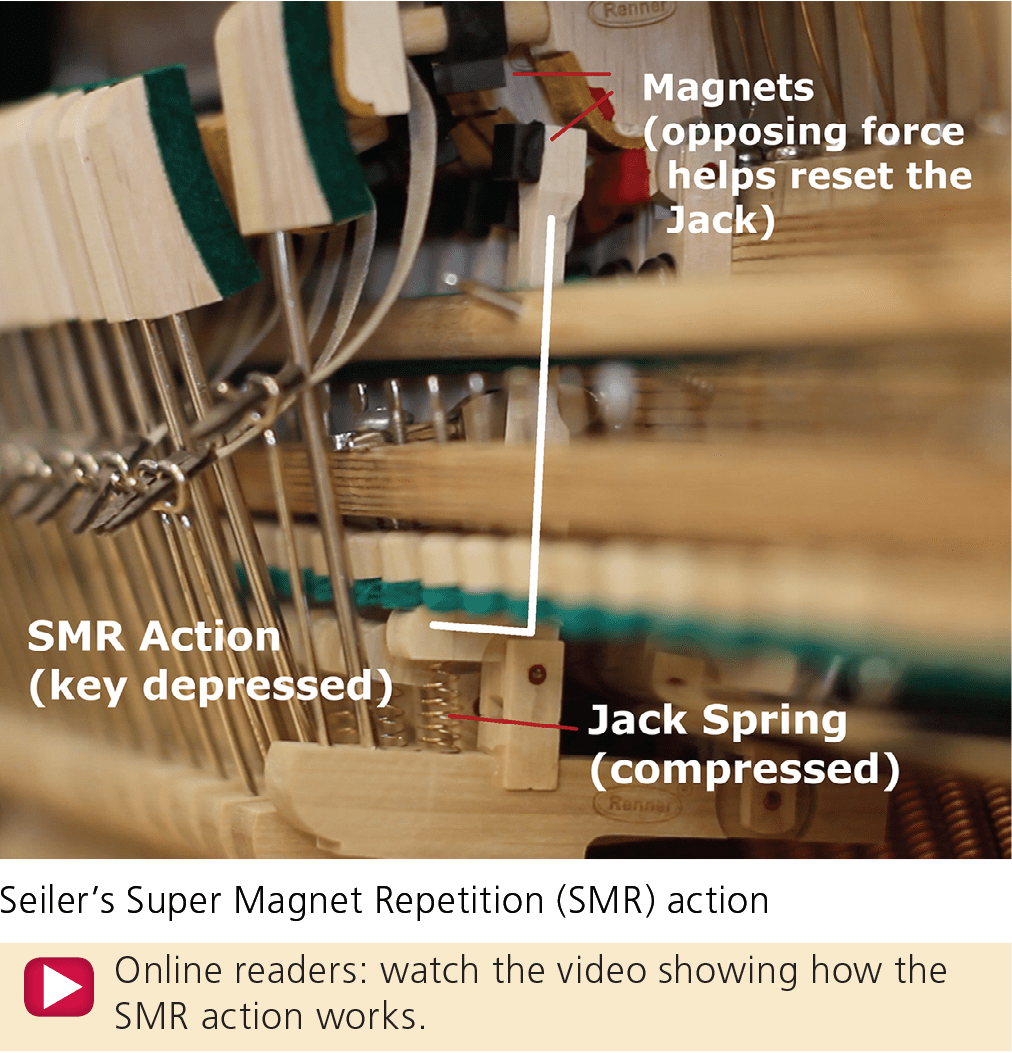
Allow me to offer an opposing and admittedly snobby viewpoint. The smallest grand pianos, especially those that are wider than they are long, tend to look awkward and toylike. They tend not to have smooth tonal transitions between registers, especially from their plain-wire treble strings to the copper-wound bass strings. With only a couple of exceptions (see Piano Buyer’s “Staff Picks” for examples), their bass registers are typically poor, with upper-bass bichords (notes with two strings) whose strings are sonically mismatched, and low-bass monochords (one string per note) whose fundamental pitches are unclear or entirely missing. Entry-level and midrange digital piano actions that simulate the feel of a grand piano have certainly improved, but I don’t know a professional pianist who really thinks playing one of these actions is the same experience as playing an acoustic piano. Improved sound samples can sound really good through headphones, but the speaker systems of digital pianos can be disappointingly unrealistic compared with the resonant, visceral, decidedly analog experience of playing a good acoustic piano. However, save for a few low-production, esoteric designs that can be found only in expensive instruments, I can’t refute the fact of the inherent limitations of the standard vertical-piano action.
At this year’s National Association of Music Merchants (NAMM) trade show in Anaheim, California, parent company Samick invited me to sample their new Seiler model ED-132M, a tall (52") vertical piano from this well-known manufacturer’s midrange line. This piano was equipped with Seiler’s proprietary Super Magnet Repetition (SMR) action, an option that had previously been available only on their best vertical model at a much higher price.
SMR is a wonderfully simple system that requires no additional maintenance and adds no moving parts to the vertical piano action. Its principle of operation involves magnets of opposed polarity that move closer to one another when a key is pressed and the action cycles. One magnet is attached to the jack, the other to the catcher (see illustration). As the jack pushes the hammer into motion and reaches the point of “escapement” (power release), the jack’s magnet gets close enough to the catcher’s magnet to produce an opposing force that resets the jack more quickly when the key is released.

The principle of the system was demonstrated to me at the NAMM show by Joe Swenson, Samick’s head technician for the U.S. market. With the case disassembled, I could see the parts, and was even able to cycle them by hand and feel the moment when they got close enough to trigger the magnetic effect. Swenson explained that since the 1990s, when the SMR action was introduced, its reliability has been improved by further securing the magnets to the wooden parts with dado joints, in addition to the glue bonding previously used.
With the explanations out of the way, I was able to get after-hours access to Seiler’s room at the NAMM show—away from the crowds, noise, and company representatives—to see whether this system made a real improvement or was just a lot of hype. Extremely helpful for this test was the presence, right next to the ED-132M, of a brand-new model ED-132—the same model, but without the optional SMR action. If you’re skeptical that the regular piano may have been poorly regulated for the purposes of my review, I can verify that a dealer liked it well enough that, by the show’s second day, the piano was marked “sold.”
For the next hour, I just practiced. I tried bits of whatever was in my fingers—snippets of a J.S. Bach keyboard concerto, some Albéniz, the trilled opening of Debussy’s L’Isle Joyeuse, and an ornamented early-classical sonata. The ED-132M was unfazed, and my playing of these pieces, which tend to demand a lot from an instrument, was never hindered by an inability of the action to repeat quickly and reliably. At some point I turned to just playing, quickly and evenly, repeated note sequences with fingerings that intermediate and advanced pianists use all the time: “3-2-1” or “4-3-2-1” patterns on the same note. On the regular ED-132 I got fairly consistent repetition throughout the instrument’s range, but occasionally I’d lose the attack of one or two consecutive fingers because the action couldn’t reset as fast as my fingers demanded—a problem experienced with most vertical pianos, and even with grands that could be better regulated. On the ED-132M, however, I experienced reliable repetition with both my dominant and nondominant hands, from the low bass through the top of the treble. The SMR system definitely improved one of the most commonly cited shortcomings of the vertical piano.
In every other way, the Seiler ED-132M sounded, felt, and looked like any other tall Seiler vertical, with a satisfying evenness of timbre and fullness of tone, particularly in the low bass, that most small grand pianos can’t match. The two ED-132 models are facsimiles of the company’s completely German-built and widely respected SE-132; however, the ED-series pianos are built in Samick’s Indonesian factory using materials sourced both from Germany and Asia, for significant cost savings. As with their ED-186 grand, I’ve found well-prepared examples of the ED-132 able to credibly duplicate the clear, distinct tone of the higher-priced German model on which it’s based.
We live in an era in which downsizing of living spaces is common. As piano owners in the U.S. market consider the possibility of smaller living spaces and music rooms, Seiler’s SMR-equipped instruments can provide a means of enhancing the action performance of a vertical piano in a way that requires less of a compromise when compared to a grand. As this premium technology trickles down to mid-level models at affordable prices, more customers can take advantage of a unique option worth their serious consideration.